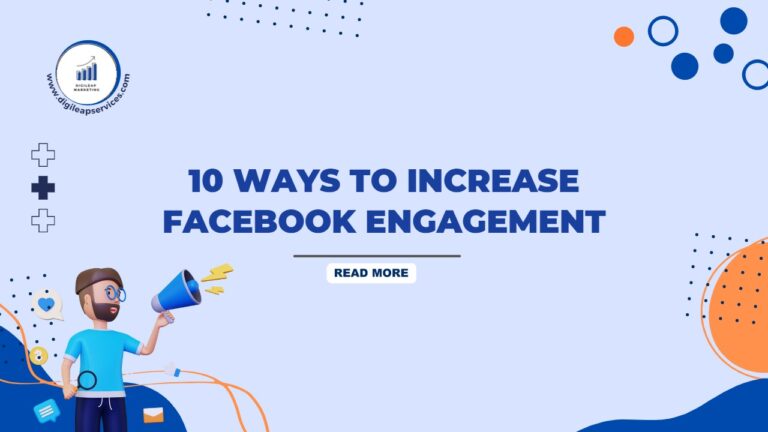10 Content marketing trends to increase traffic
10 Content marketing trends to increase traffic:
Content marketing isn’t an easy task. Marketers must fully understand their audience and what they are searching for; however, with digital content trends shifting faster than ever, this is becoming increasingly difficult. What worked for you last year, or even last month, may no longer be applicable, and you must remain flexible and adjust your content tactics appropriately.
Keeping up with the current content marketing trends can help you remain ahead of the curve and give quality information to your audience that they want to read, rather than what you want to publish.
Here are the top ten content marketing trends that increase traffic.
1. Increase the rate at which blogs are created.
With over 6 million blogs now available, you might believe blogs are oversaturated and out of date, yet you couldn’t be more incorrect. According to surveys, 77% of internet users read blogs regularly, either to find an answer to a question, to learn something new, to remain up to speed on the latest news, or to decide whether or not to purchase anything. So, blogs are far from extinct, but you must ensure that yours are worth reading.
According to HubSpot, companies that post 16 or more blogs per month obtain 3.5 times the traffic of those that produce less than four blogs per month. Remember that quality is always preferable to quantity when it comes to written material, formatting, and accompanying visuals. So, instead of just writing blogs to satisfy a quota, develop material with a purpose within your given resources. Don’t forget to promote your blogs!
2. Invest in SEO content.
According to recent surveys, SEO content is becoming increasingly vital for organizations, with 69% of marketers engaging in SEO now. According to the Content Marketing Institute, 73% of B2C marketers and 78% of B2B marketers utilize keyword research to develop content, and you should too.
SEO content is critical for helping potential clients find you online by raising your chances of appearing in the top spots on Google’s search results page. As a result, this will increase traffic to your site and encourage potential buyers to convert. 66% of buyers undertake some type of online research before making an online purchase, so getting your site at the top of search results should be a key goal.
3. Make use of video
It is anticipated that 3.37 billion internet users will be watching video content in 2022, with video streaming and downloads accounting for 82% of worldwide internet traffic, and this figure is only expected to climb. As you can see, video content is quite popular and, as such, is a very strong tool for marketers.
4. Participation in real-time
Along with video content, customers will expect certain firms to go one step further and capitalize on another social media content trend: real-time involvement. The major reason for this is to increase authenticity or to increase traffic, develop a brand personality, and interact with your audience directly. As a result, live broadcasting, such as on TikTok Lives, Instagram Lives, or even LinkedIn Lives will grow increasingly popular.
Brands would be required to provide real-time involvement in their customer service departments in addition to live broadcasting. Consumers will expect companies to respond to their concerns and resolve their issues through social media platforms and live chats in real-time. So, now is the moment to start using conversational marketing to communicate with your consumers in real-time.
5. Conduct your webinars
B2B customer behaviors are changing, and content marketers must work even harder to persuade them to complete the buyer’s journey. According to Forrester, the number of contacts required before B2B consumers make a purchasing choice has increased by 59%, as they now conduct more research and depend more heavily on input from colleagues. Marketers must thus improve their communication skills. Webinars are an excellent method to accomplish this.
Webinars are simply online training sessions that delegates sign up for with their email address and join via conferencing systems like Zoom. Hosting a webinar as a brand is an efficient approach to demonstrating your knowledge in a certain field and developing authority.
6. Begin working with audio
We are busier now than ever before. We are constantly on the move and pushing ourselves to work more, which might leave us with less time for leisure. Consuming audio information, such as podcasts, is an excellent alternative for the time-pressed individual. It helps people to entertain themselves or learn new things without breaking their hectic routine, whether it’s listening on their morning commute or listening in the background while working. There are presently 464.7 million podcast listeners worldwide, with a projected increase traffic to 504.9 million by 2024.
Podcasts are excellent for humanizing your brand and building authenticity because they allow your audience to interact with a real person with a genuine voice. Having a knowledgeable host or engaging partners will also assist your brand in establishing authority in your sector and demonstrating its competence.
Audio content, like other content, may be repurposed into new formats, such as blog entries for your website or sound bites and infographics for social media. This will help you save time and resources while increasing your ROI.
7. Emphasize content experience
The complete path a reader takes when reading material, including accessing, consuming, and engaging with content across many platforms, is referred to as the content experience. This includes how the material is organized and simple to locate, how you personalized it, how relevant and entertaining it is, the platforms you employ, and how different content pieces interlink.
Changing the way your material is delivered to your audience may have a significant influence on how well it is received. This may involve including extra visuals, converting a lengthy blog post into a video, incorporating mobile optimization, or utilizing more audience data for greater personalization.
8. Produce detailed eBooks and whitepapers
eBooks and whitepapers are lengthy kinds of literature that give detailed information on a certain topic or issue. They are intended to assist potential consumers in understanding a problem and, eventually, finding a solution – preferably utilizing your services or goods.
According to surveys, 71% of B2B users rely on eBooks and whitepapers to assist them to make purchase choices. Many times, brands are interested in your services, but they need to provide a business case to key stakeholders, the real decision-makers. As a result, they require all available information as well as hard facts. As a result, lengthier kinds of content are something to think about this year, especially if you’re marketing to other firms.
9. Encourage the utilization of user-generated content (UGC)
According to reports, 92% of consumers prefer word-of-mouth or personal referrals over any type of brand-created promotion. And, with consumer trust on the decline, establishing a strong relationship with consumers, acquiring trust, and providing a personalized experience should be major priorities this year.
User-generated content, or UGC, has enormous potential for organizations seeking to create brand trust and consumer loyalty. UGC may take various forms, including testimonials, product reviews, blogs, and social media postings and stories – anything published by someone other than your business.
10. Artificial Intelligence (AI) and Machine Generated Content (MGC)
Last but not least, there is AI and MGC. With the recent introduction of ChatGPT and other artificial intelligence for content production, there is little question that AI and MGC will be tested in the marketing world this year and expand to become a new content creation trend.
Whereas these techniques can create higher material that can be utilized for content analysis, creativity, and editing, there are significant limits. ChatGPT, for example, cannot give credible sources and, without context, may not always deliver accurate information. It may also be redundant and will not give an exhaustive solution to your questions. While AI and MGC are far from ideal, they may nevertheless be employed as part of your plans in conjunction with human knowledge.
Conclusion
While the pandemic is still a risk, businesses have a chance to survive. This is doable with a well-thought-out content marketing approach. These 2023 content marketing trends to watch are an excellent resource for companies developing marketing plans.












